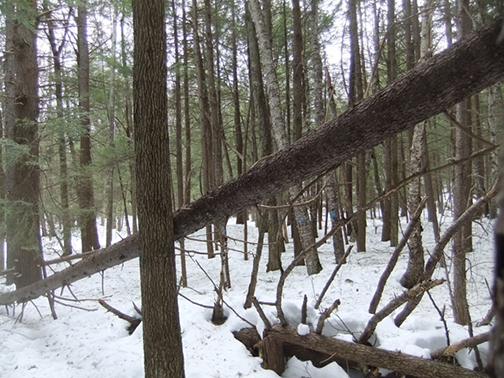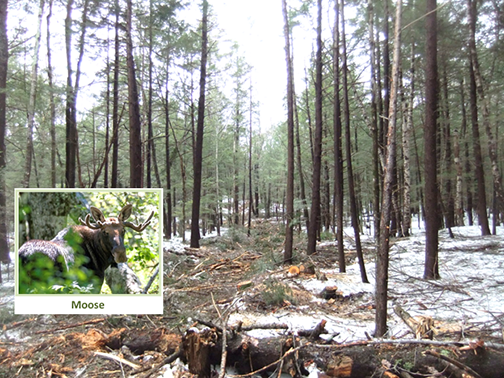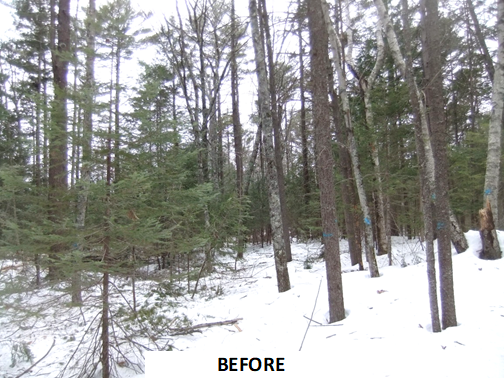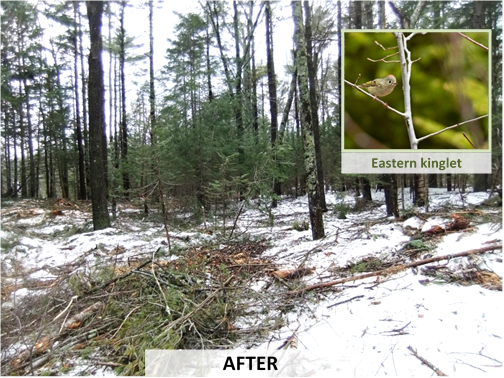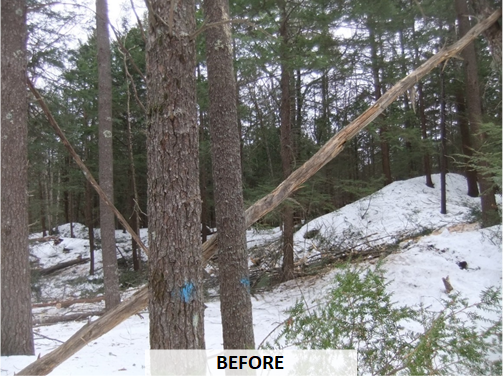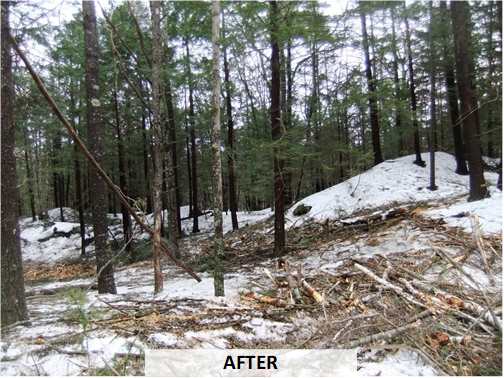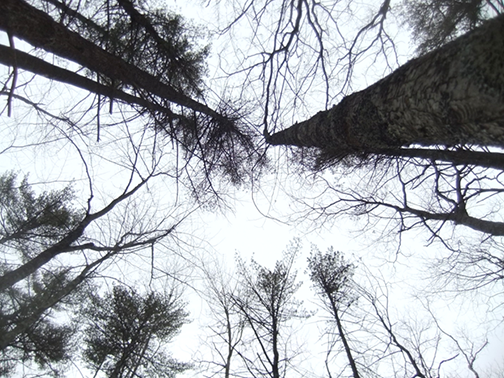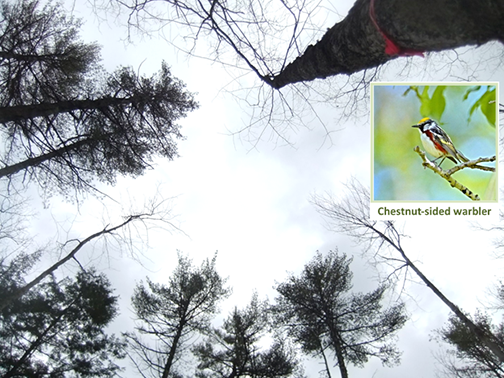DACF Home → Bureaus & Programs → Maine Forest Service → Projects → What will my woods look like? → Improvement Harvest: Mixed wood pole stand
Improvement Harvest
Site: Mixed wood pole stand
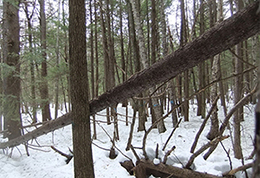
Woodland Owners’ View
The management plan says to do an “improvement cut” in this area. There are too many trees. There is a concern about invasive pests, so “fewer trees” is better for this stand.
Logger’s View
The rolling terrain is not a problem for most logging equipment. Since winter weather in this part of the state can be quite variable, it’s good to have high ground to work on, and work around the few lower wet areas, saving them for when it gets cold enough to freeze a side trail. The way the wood is marked, the crew can efficiently cut a good volume of wood, with good value at the mills.
Forester’s View
This is a pole sized and larger stand of mixed wood, about two-thirds softwoods such as hemlock, fir and spruce, with one-third birch, maple, oak and other hardwoods. The presence of hemlock wooly adelgid in the area reduces the potential future value of the hemlock. The stocking is above optimum, and the most valuable trees need more crown space to grow. Recommend the removal of less desirable trees, primarily to improve composition and quality. Reduce basal area by approximately 40%. Marking the trees to remove to fulfill this prescription will make it easy for the loggers to know what to cut and plan their work accordingly.
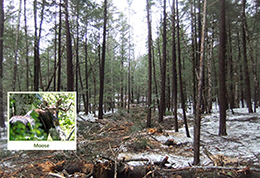
Woodland Owners’ View
It does look better, more orderly and easier to see through. Branches were left on the trail. Loggers do that on purpose, to keep from making any big ruts, which is good. It won’t harm the roots of the remaining trees.
Forester’s View
The loggers did a nice job laying out this harvest. They cut the marked trees and concentrated most of the equipment activity and the limbs and tops in one main trail. No discernible damage to the residual stems. The percentage of hemlock in the stand is reduced, but the woodland owner still needs to keep an eye out for hemlock wooly adelgid.
Wildlife Outcome
Mechanical harvesting equipment makes it easier to safely manage snags and hazards while leaving downed and decaying wood in the forest, which benefits a wide range of wildlife species.
Equipment Used
In-woods cut-to-length processor and forwarders; small cable skidder for trees that are too big for the processor to handle efficiently.
The next three sets of pictures below also show differing views of the same “Improvement Harvest,” in the same stand.
According to the U.S. Forest Service, the definition of an Improvement Harvest is: The removal of less desirable trees in a stand of poles or larger trees, primarily to improve composition and quality.
Improvement Harvest II
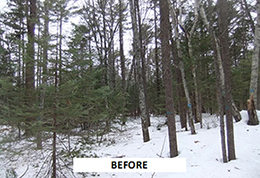
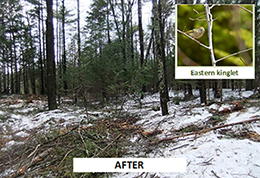
Improvement Harvest III
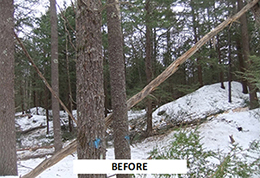
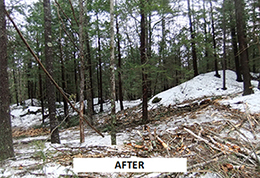
Improvement Harvest - Looking Up
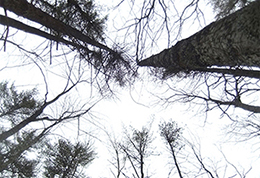
Woodland Owners’ View
During warmer months, there are so many trees and leaves that there isn’t much sunlight getting through. Because of that, the trees won’t grow as well. If a thinning happened, then the remaining trees would have more light and resources. They will grow better and faster without the competition.
Forester’s View
When the leaves are out, canopy closure for this stand is nearly 100%. A thinning and improvement cut will open space around the crowns of the best crop trees, allowing them to increase growth and future value.
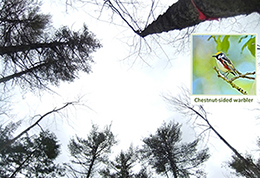
Woodland Owners’ View
The remaining trees are now going to have more sunlight. They are “released” which means the competing trees have been removed.
Forester’s View
The remaining crop trees have been released, and with no damage to the crowns. The white pines especially, and the hardwood too, will make good use of the additional sunlight starting next growing season.
Wildlife Outcome
Small upper canopy gap openings (less than two acres) are beneficial to certain songbirds, such as the chestnut-sided warbler.
Equipment Used
In-woods cut-to-length processor and forwarders.
Location:
Woods Road Community Forest, Falmouth
Amanda Stearns, Open Space Manager
Parks and Community Programs Department
207-699-5312; openspace@falmouthme.org
